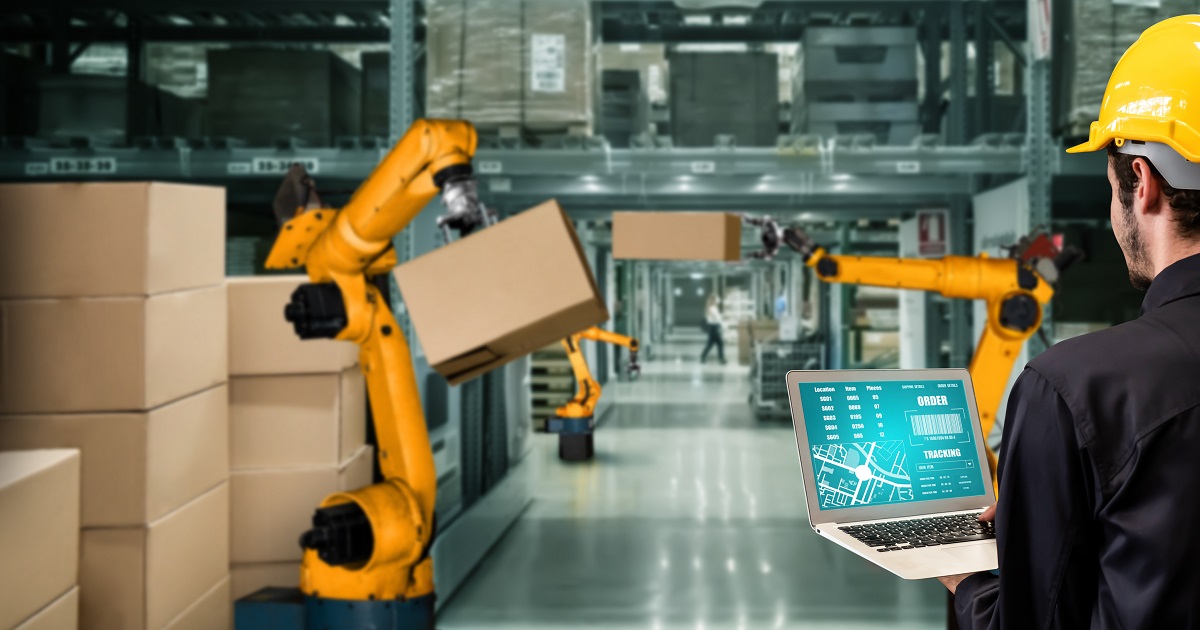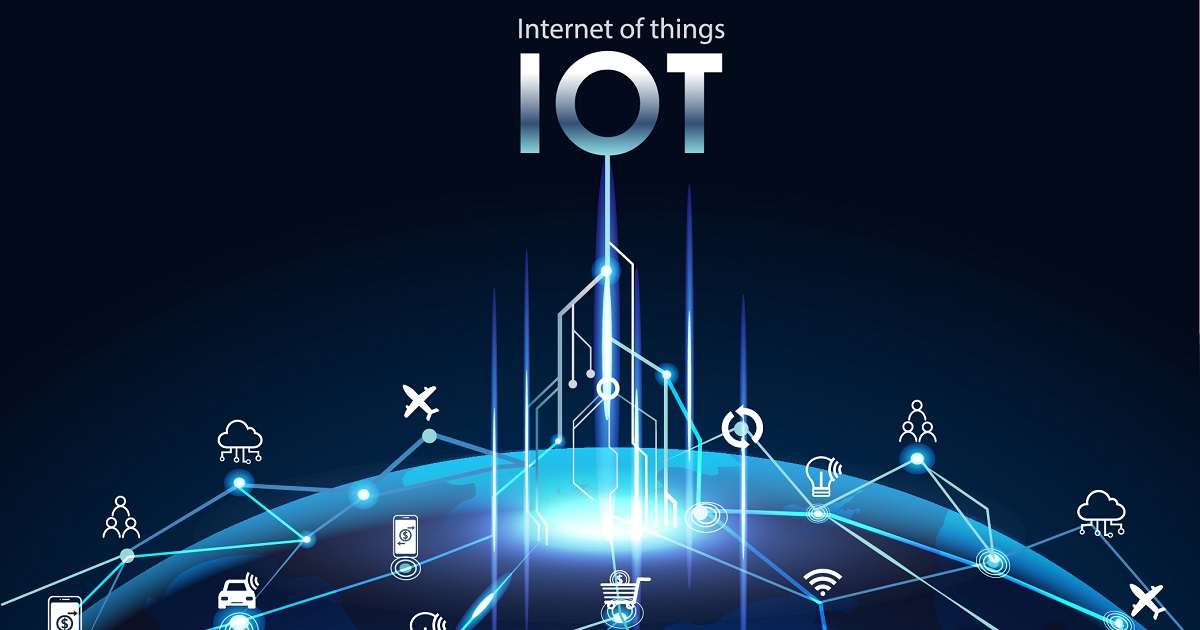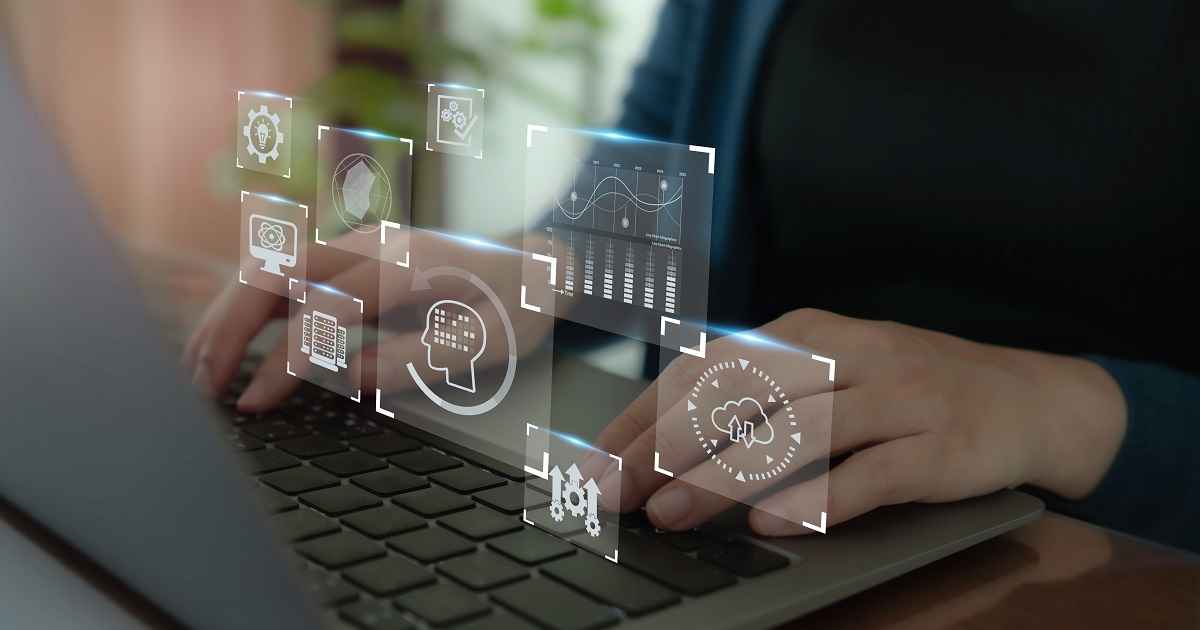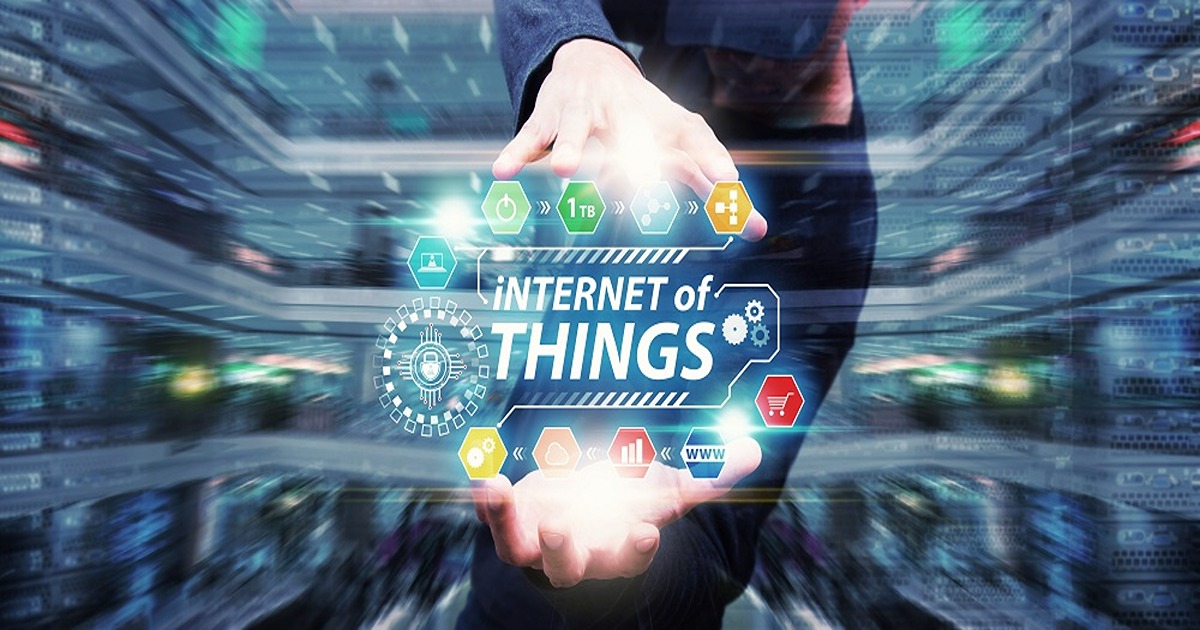
Enterprise Iot
Article | May 11, 2023
Introduction
Automation, interconnectivity, machine-learning, and real-time data are part of Industry 4.0, a new phase in the Industrial Revolution. Industry 4.0, which includes IIoT and smart manufacturing, combines physical production and operations with smart digital technologies. It creates a more holistic and linked environment for manufacturing and supply chain management organizations.
In today's production environment, "automation" has a new, more advanced meaning than it has in the past. Industry 4.0 refers to the necessity of lean, efficient operations and the function of sustaining and improving production. In contrast, IIoT distinguishes manufacturing gadgets from consumer products that can connect wirelessly to internal networks and the internet.
IIoT Powering the Fourth Industrial Revolution
Manufacturing, logistics, oil and gas, transportation, mining, aviation, energy, and other industries use the IIoT. Its main goal is to improve operations, mainly through process automation and maintenance. IIoT capabilities improve asset performance and allow for improved maintenance management. The introduction of Industry 4.0 technologies marked a significant milestone in the human-machine relationship's history. I4.0 was first talked about in 2011. Since then, it has proliferated because of new technologies such as cyber-physical systems, IT/OT convergence, AI/ML, Blockchain, and AR/VR.
Data is at the heart of the Fourth Industrial Revolution. The growth of the Internet of Things (IoT) is one of the main reasons behind this. The IoT is making a significant contribution in making businesses smarter and improving their workflows. Moreover, more data is being made and used by connected devices than ever before, from the home to the factory.
In order to thrive in the fourth industrial revolution, businesses must embrace new technologies. The general structure of IIoT applications is defined by standards-based industrial system architectures such as the Industrial Internet Consortium's Reference Architecture. Sensors and IoT devices, IoT middleware platforms, IoT gateways, edge/cloud infrastructures, and analytics applications are all part of the stack.
The Future of the IIoT
The Industrial Internet of Things (IIoT) is primarily regarded as one of the most significant current and future trends influencing industrial companies.
To comply with new rules, industries are rushing to upgrade their systems, machinery, and equipment. This is necessary to keep up with market volatility and deal with disruptive technologies.
Safety, efficiency, and profitability have all improved dramatically in industries that have adopted IIoT. As IIoT technologies become more widely adopted, this tendency is projected to continue.
Conclusion
The fourth industrial revolution has drastically altered our perceptions of things in the workplace. At a rapid rate, capitalists are becoming more interested in sophisticated ideas.
The way forward is to embrace existing and emerging technology throughout fundamental operations to unleash more enticing possibilities. It emphasizes the importance of comprehending the impact collaborative ecosystems can have as well as how they will become a major differentiator for generating value with a better-trained workforce.
Read More

Industrial IoT, IoT Security
Article | July 12, 2023
Discover the crucial role of big data capabilities in unlocking the potential of IoT for businesses. This article covers their synergy, challenges, and value in decision-making and revenue generation.
Contents
1 Why Big Data and IoT Matter for Businesses
2 Understanding Synergy of Big Data and IoT
2.1 How IoT generates Big Data
2.2 Challenges of Processing Big Data from IoT Devices
2.3 Importance of Big Data in IoT Applications
3 The Value of Big Data and IoT for Businesses
3.1 Improved Decision-making for Businesses
3.2 Generate New Revenue Streams
4 Final Thoughts
1. Why Big Data and IoT Matter for Businesses
The internet of things (IoT) is connecting all types of physical assets to the internet, from smart wearables that track wearer’s vitals to connected industrial units that can report any malfunctions automatically. Big data in IoT is a natural outcome with the growth of IoT devices, with an immense surge in the amount of data being generated.
There are currently over 13 billion connected IoT devices worldwide.
(Source – Techjury)
This data is extremely valuable to businesses as it can help streamline operations, predict trends, and diagnose device issues. Certain functions of IoT devices that are crucial for modern businesses, such as enabling predictive maintenance, depend on the analysis of the data generated every second. However, to maximize the ROI from their IoT ecosystem, businesses must first manage and process the vast amounts of unstructured data they produce. This is where big data capabilities come in.
2. Understanding Synergy of Big Data and IoT
Big data and the IoT are fundamentally different concepts, but are closely connected. Big data is a term that is used for a great amount of data that is characterized by volume, velocity, variety and veracity (or the ‘trustworthiness’ of data). The IoT is a term for physical devices or objects linked to the internet using an assortment of technologies. Understanding the synergy between these two technologies will be critical for businesses looking to leverage their full potential.
2.1 How IoT generates Big Data
IoT is one of the primary drivers of big data growth. The vast number of interconnected devices in the IoT ecosystem generates a massive amount of data every second. This data includes information on user behavior, device performance, and environmental conditions, among others.
The nature of this data makes it challenging to store, process, and analyze using traditional data management tools. This is where big data technologies such as Hadoop, Spark, and NoSQL databases come in, providing the ability to manage massive amounts of data in near-real-time, enabling critical applications of big data in IoT. For businesses, processing IoT data is synonymous with processing big data, due to the nature of the data generated by an IoT ecosystem.
2.2 Challenges of Processing Big Data from IoT Devices
IoT data processing is a complex and challenging task due to several reasons. Firstly, the sheer volume of data generated by these devices is enormous and is only increasing. This requires a robust infrastructure and specialized tools to store, manage, and analyze the data efficiently.
This data is also generally unstructured, heterogeneous, and complex, making it difficult to process using traditional data management and analysis techniques. Moreover, it is often noisy and may contain errors or outliers, which can impact the accuracy of data analysis. Businesses also face a challenge when securing such vast amounts of data. Since IoT devices collect sensitive information such as personal and financial data at scale, it is critical to ensure that data is encrypted, transmitted securely, and stored safely.
Additionally, IoT devices often operate in remote locations with limited connectivity, making it challenging to transmit data to the cloud for storage and analysis. As IoT devices continue to proliferate and generate increasingly large amounts of data, businesses must adopt big data technologies to gain actionable insights from this data.
2.3 Importance of Big Data in IoT Applications
There are several use cases of the IoT where processing large amounts of data is essential. It plays a critical role in IoT applications, providing businesses with valuable insights that can be used to optimize processes, reduce costs, and improve overall efficiency. By collecting and analyzing large amounts of data from IoT devices, businesses can gain a better understanding of customer behavior, machine performance, and other critical metrics.
For example, big data in IoT can be used to identify patterns in customer behavior, allowing businesses to tailor their marketing efforts and improve customer engagement. Additionally, IoT devices can be used to collect data on machine performance, allowing businesses to identify potential problems before they occur, minimize downtime, and optimize maintenance schedules. The value of big data in IoT applications lies in its ability to provide businesses with real-time insights that can be used to drive growth, reduce costs, and improve overall efficiency.
3. The Value of Big Data and IoT for Businesses
Businesses looking to integrate big data in IoT must first consider their data storage and analytics capabilities. By understanding the value of big data technology in capturing and analyzing IoT-generated data, businesses can unlock insights that can help them make better decisions, optimize processes, and create new business opportunities.
3.1 Improved Decision-making for Businesses
IoT and big data technologies offer businesses a wealth of data that can be used to make better-informed decisions. By integrating IoT sensors and devices with their operations, businesses can collect real-time data on customer behavior, operational performance, and market trends. This data can then be analyzed using big data analytics tools to generate valuable insights that can inform decision-making.
For example, operational data can be analyzed to identify inefficiencies and areas for optimization, helping businesses reduce costs and improve efficiency. With the right data storage and analytics capabilities, businesses can leverage the power of IoT and big data to gain a competitive advantage and make better-informed decisions that drive growth and success.
3.2 Generate New Revenue Streams
By leveraging the vast amount of data generated by IoT devices and analyzing it with big data analytics tools, businesses can gain insights into customer behavior, market trends, and operational performance. These insights can be used to create new revenue streams and business models, such as subscription-based services, pay-per-use models, and predictive maintenance services.
For example, IoT sensors can be used to collect data on equipment performance, allowing businesses to offer predictive maintenance services that help prevent equipment breakdowns and reduce downtime. Similarly, customer data can be analyzed to identify new revenue opportunities, such as personalized product recommendations and targeted advertising. With the right strategy and investment in IoT and big data technologies, businesses can unlock new revenue streams and create innovative business models that drive growth and success.
4. Final Thoughts
Big data in IoT is becoming increasingly important for businesses, and the future prospects are bright. As IoT continues to grow and generate more data, businesses that can effectively analyze it will gain a competitive advantage, leading to increased efficiency, reduced costs, and higher ROI. To fully realize the benefits of IoT, businesses must develop big data analytics and IoT devices in tandem, creating a feedback loop that drives continuous improvement and growth. By embracing these technologies, businesses can make data-driven decisions and unlock new insights that will help them thrive in the years ahead.
Read More

IoT Security
Article | July 17, 2023
Explore the emerging complexities of IoT data governance with 7 key challenges to tackle. Address data privacy, security, and ethical concerns, empowering your business for success in 2023 and beyond.
Contents
1 The Case for Maintaining IoT Data Governance
2 Challenges of IoT Data Governance
2.1 Lack of Organizational Commitment
2.2 Data Privacy Concerns
2.3 Lack of Endpoint Security for IoT Devices
2.4 Issues with IoT Device Authentication
2.5 Increasing Volume of Unstructured Data
2.6 Unethical Use of IoT Data
2.7 Inadequate Data Governance Protocols
3 Addressing IoT Data Governance Challenges
3.1 Security by Design
3.2 Awareness Initiatives
3.3 Standardized Data Governance Policies
4 Conclusion
1 The Case for Maintaining IoT Data Governance
The growing use of IoT devices across various industries has caused a surge in data volume. Most of these devices store sensitive company data, which plays a crucial role in business operations but can have dire consequences if it falls into the wrong hands. Thus, companies need to understand what is IoT governance and its implementation to safeguard sensitive data from unauthorized access and malicious exploitation.
2 Top Challenges in IoT Data Governance for Businesses
2.1 Lack of Organizational Commitment
Organizational commitment is essential for effective IoT data governance. There needs to be a clear purpose and goals regarding data governance that are communicated to all stakeholders. Not focusing on organizational commitment can result in a lack of alignment between the organization's goals and the IoT data governance strategy, as well as uncertainty about ownership and accountability for data governance across the organization.
2.2 Data Privacy Concerns
Ensuring data privacy is a significant concern when implementing IoT data management to maintain IoT data governance security. With the vast amount of data generated by IoT devices, there is an increased risk of personal and sensitive data being compromised. Therefore, it is crucial to identify potential vulnerabilities, mitigate the risk of data privacy breaches in IoT environments, and anonymize user data for consumer devices.
2.3 Lack of Endpoint Security for IoT Devices
IoT devices are often designed with limited processing power and memory, and as such, many connected devices do not have built-in security features. This makes them attractive targets for hackers seeking to access confidential data or disrupt operations. Without proper endpoint security measures, IoT devices can be compromised, leading to data breaches, network downtime, and other security incidents that can compromise the entire system's integrity.
2.4 Issues with IoT Device Authentication
When IoT devices are designed without proper authentication mechanisms, it can be challenging to verify their identities. This results in possible unauthorized access, data breaches, and other security incidents. To supplement IoT data management practices, companies must implement secure authentication protocols specifically designed for IoT environments, such as device certificates, digital signatures, and multi-factor authentication, to maintain IoT data governance.
2.5 Increasing Volume of Unstructured Data
IoT devices generate vast amounts of data in various formats and structures, including text, images, audio, and video, which can be difficult to process, manage, and analyze. This data is often stored in different locations and formats, making it challenging to ensure quality and consistency. Moreover, this flood of unstructured data can contain sensitive information that must be protected to comply with regulations and standards. For effective IoT data governance, it is necessary to implement data classification, metadata management, and data quality management to make sense of unstructured data.
2.6 Unethical Use of IoT Data
IoT devices collect data that can be sensitive and personal, and misuse can lead to various negative consequences. Data from IoT devices can be used to develop insights, but it must be handled carefully to avoid privacy violations, discrimination, or other negative consequences. Ensuring data ethics requires organizations to consider the potential impacts of their data collection and use practices on various stakeholders. This involves addressing issues such as data privacy, data ownership, transparency, and bias in IoT data analytics.
2.7 Inadequate Data Governance Protocols
Without proper data governance protocols, IoT data may be inaccurate, incomplete, or difficult to access or analyze, reducing the effectiveness of IoT systems and limiting the potential benefits they can provide. Additionally, inadequate data governance protocols can lead to security and privacy vulnerabilities, potentially exposing sensitive data to unauthorized access or theft. This can result in legal and regulatory penalties, reputational damage, and a loss of customer trust.
3 Addressing IoT Data Governance Challenges
3.1 Security by Design
This approach involves integrating security and governance considerations into the design and development of IoT systems from the outset. This helps minimize vulnerabilities, prevent breaches that may compromise the confidentiality, integrity, and availability of IoT data, and help maintain IoT data governance. In addition, by prioritizing security in the design phase, organizations can implement security controls and features tailored to their IoT systems' specific needs, which can help prevent unauthorized access, manipulation, or theft of IoT data.
3.2 Awareness Initiatives
IoT data governance challenges can arise due to an improperly trained workforce that may not recognize the purpose and benefits of data governance practices. Awareness initiatives can help organizations develop a culture of security and privacy. These initiatives can educate employees and stakeholders about the risks and best practices associated with IoT data governance, including the importance of data security, privacy, and ethical considerations. By raising awareness of these issues, organizations can promote a culture of responsible data management, encourage stakeholders to adhere to data governance policies and procedures, and reduce the risk of human error or intentional misconduct that could compromise IoT data.
3.3 Standardized Data Governance Policies
Collaboration between local, regional, and federal governments and businesses is essential to establishing frameworks for implementing IoT and related technologies within their jurisdictions. Cooperation between governments and enterprises is crucial for implementing a standardized IoT data governance policy. This will protect end-users by mandating basic standards in procurement processes and creating regulations and guidelines that promote responsible data governance.
4 IoT Data Governance: Future Outlook
Data is one of the most valuable resources for organizations today, and addressing the problem of IoT data governance will ensure that the IoT of enterprises is used effectively and responsibly. Straits Research reported that the worldwide data governance market had a worth of USD 2.1 billion in 2021 and is projected to reach an estimated USD 11.68 billion by 2030. IoT devices are a key driving factor behind the growth of the data governance market, and as the amount of data generated and the number of devices grows, so will the complexity of data governance. By maintaining strong data governance policies and tracking changes in policies and best practices, businesses can ensure compliance and maintain trust in the long run.
Read More

Enterprise Iot
Article | July 15, 2022
Physical and digital security are changing due to cloud-based IoT software, which makes it possible to combine them and use them to utilize data better. In almost every sector, data is essential to success, and security is no exception. To better understand what's going on in your business, you can combine cloud-based solutions that contain all the information on a single interface. For instance, integrating security camera feeds with cloud-based access control systems enables real-time visual identification verification.
Utilizing cloud-based IoT technology also enhances productivity and enables quick replies. Combining digital and physical security, often known as security convergence, is another technique to optimize IoT and cloud-based security solutions. To guard against internet flaws and intrusions, a cloud-based physical security system needs cybersecurity software. In a similar vein, physical security measures prevent sensitive data from getting into the wrong hands. Teams for physical and cyber security might combine to provide a more comprehensive plan of action.
Maintaining current versions of the technology you are using in your security plan is necessary for future-proofing your technology. To ensure that your cloud-based system has no vulnerabilities that could expose your company to cybersecurity risks, it is crucial to keep all software updated. Updates can be automated and carried out remotely with cloud-based software, requiring little effort on your part to keep your software current.
You have the chance to develop a security system that is future-proof when a firm adopts cloud-based IoT technologies as part of your security plan. When organizations use IoT technology, cybersecurity is a significant concern. However, combining physical and digital security lets you ensure your cloud-based system is well-protected from vulnerabilities. In addition, your security and IT teams will be better able to manage the evolving security landscape if you combine physical and digital security ideas.
Read More